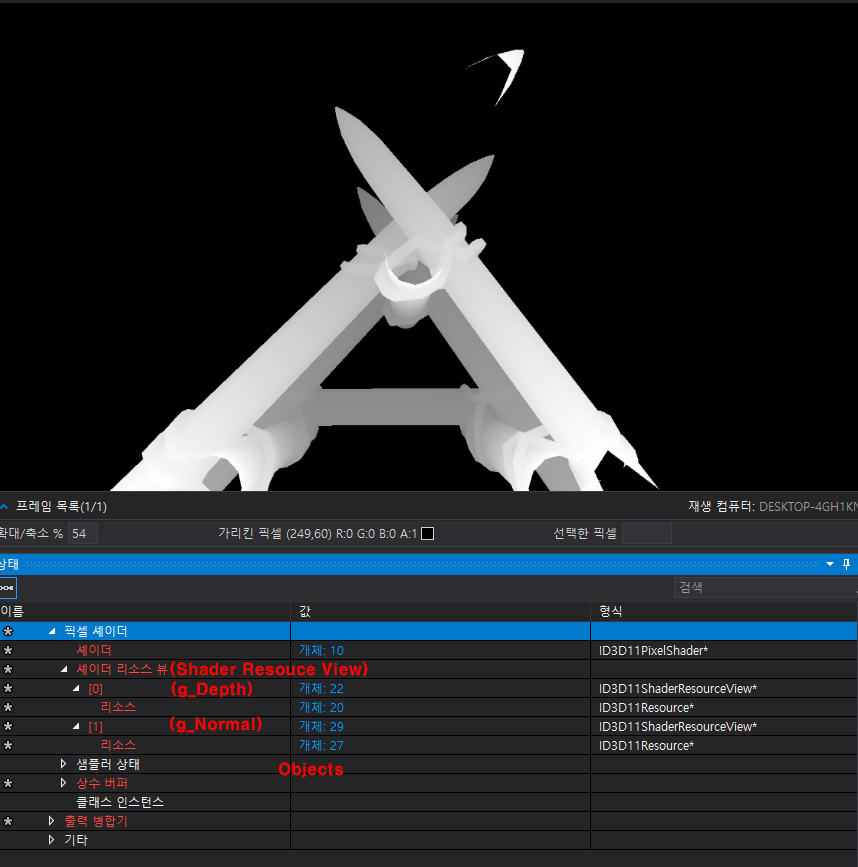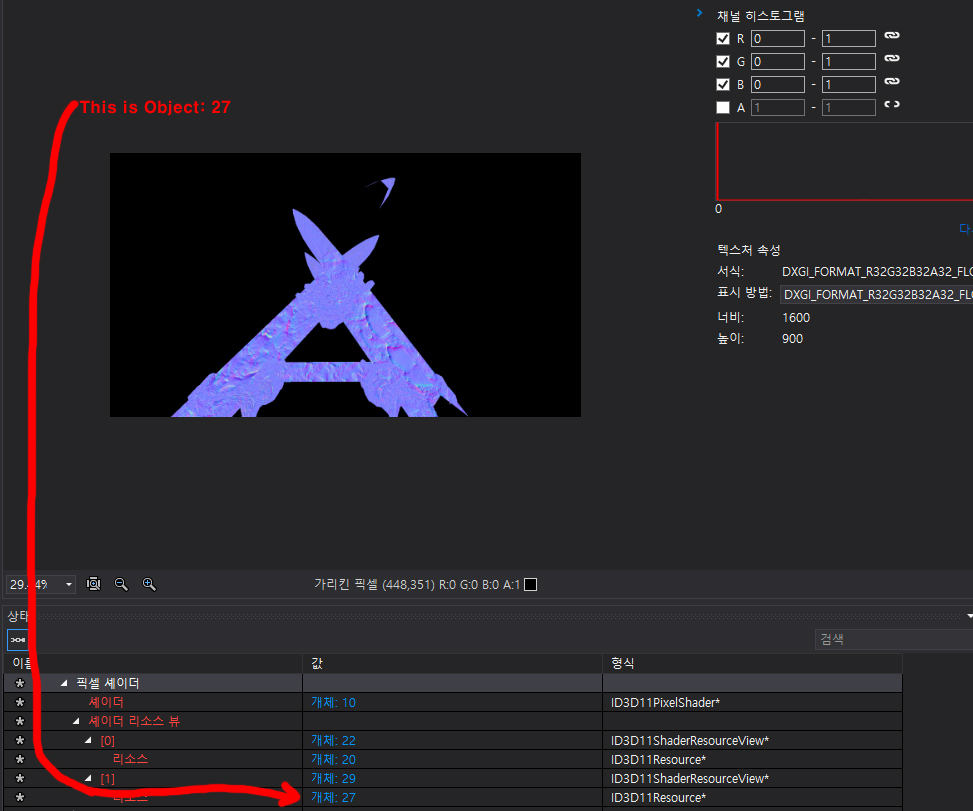i'm trying to implement deferred rendering. i had been drawing diffuse, depth, normal at ‘_renderTargetList[0], _renderTargetList[1], _renderTargetList[2]’.
this is render code.
void Renderer::renderLight()
{
ID3D11RenderTargetView *pRenderTargetView = nullptr;
ID3D11DepthStencilView *pDepthStencilView = nullptr;
g_pGraphicDevice->getContext()->OMGetRenderTargets(1, &pRenderTargetView, &pDepthStencilView);
//-------------------------------------------------------------------------------------------------------------------------------------------------------------
g_pGraphicDevice->getContext()->ClearRenderTargetView(_lightTarget->getRenderTargetView(), reinterpret_cast<const float *>(&Colors::Black));
g_pGraphicDevice->getContext()->ClearDepthStencilView(pDepthStencilView, D3D11_CLEAR_DEPTH | D3D11_CLEAR_STENCIL, 1.f, 0u);
ID3D11RenderTargetView *pLightRenderTargetView = _lightTarget->getRenderTargetView();
g_pGraphicDevice->getContext()->OMSetRenderTargets(1u, &pLightRenderTargetView, nullptr);
g_pGraphicDevice->getContext()->PSSetShader(g_pShaderManager->getPixelShader(TEXT("PointLightShader.cso")), nullptr, 0);
ID3D11ShaderResourceView *pDepth = _renderTargetList[1]->getShaderResouceView();
ID3D11ShaderResourceView *pNormal = _renderTargetList[2]->getShaderResouceView();
for (auto iter = _lightComponentList.begin(); iter != _lightComponentList.end(); ++iter)
(*iter)->Render();
g_pGraphicDevice->getContext()->OMSetRenderTargets(1, &pRenderTargetView, pDepthStencilView);
}now i will draw Pointlight, so i made ‘_lightTarget’ and ’PointLightShader'.
when i draw Pointlight it's not work well. so i had started debug it and founded that only g_Depth was sampled. although i set depth, normal texture and sampled these textures with uv.
this is PointShader.hlsl
Texture2D g_Depth;
Texture2D g_Normals;
SamplerState g_Sampler;
struct PixelIn
{
float4 pos : SV_POSITION;
float2 uv : TEXCOORD0;
float3 normal : NORMAL0;
float3 tangent : NORMAL1;
float3 binormal : NORMAL2;
};
cbuffer CBuffer
{
float4 g_lightPosition;
float4 g_lightColor;
row_major float4x4 g_inverseCameraViewMatrix;
row_major float4x4 g_inverseProjectiveMatrix;
};
float4 main(PixelIn pIn) : SV_TARGET
{
//PixelOut pOut;
// uv (0 <= x, y <= 1) to proj (-1 <= x, y <= 1)
//float4 projectPosition = float4(0.f, 0.f, 0.f, 0.f);
//projectPosition.x = ((2.f * pIn.uv.x) - 1.f);
//projectPosition.y = ((-2.f * pIn.uv.y) + 1.f);
//projectPosition.z = (1.f - g_Depth.Sample(g_Sampler, pIn.uv).r);
//projectPosition.w = 1.f;
// not important!
...
float4 depth = g_Depth.Sample(g_Sampler, pIn.uv);
float4 normal = g_Normal.Sample(g_Sampler, pIn.uv);
return normal; // sampled from g_Depth ???
}this is result
i used graphic debugging tools and i checked that resouces bounded well (object 27)


anybody who explain this situation? please?




